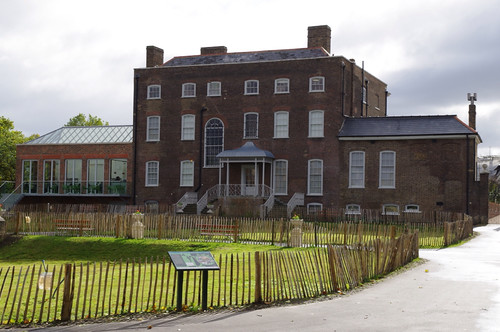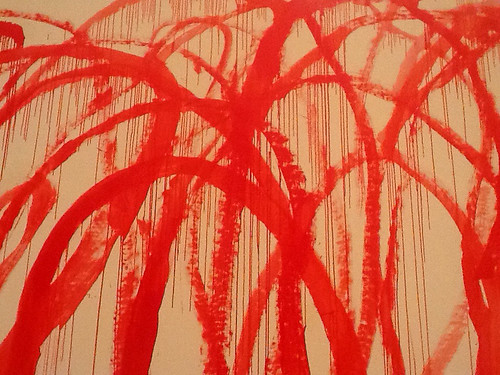The newly refurbished William Morris Gallery opened in August last year with a bit of a coup, a rare viewing of the 14 metre long Walthamstow Tapestry by Grayson Perry. The place was down at heel, hardly ever open when you'd want to visit and always the same when you did get inside, so a revamp is quite welcome - even if it is perhaps a little too child-friendly. The purpose of the revamp is evidently to shift the gallery up a gear, from local Walthamstow attraction to a place in the London art world. This new exhibition is a selection of images of the East End by sixties icon David Bailey, reinforcing that objective. There are two quite different sets of images in the show, black and white street scenes from 1961, and much larger colour photographs of people in pubs and clubs from 1968. Bailey's photographs portray a world rather different from that same geographical area today.
Gritty, grainy scenes of children playing on bomb sites and tumbledown brick terraces are one part of it, the earlier set. Printed at modest size in high contrast deep black with a black border, they show half-familiar streets with that different life going on. They have a period charm, a kind of photography that was fashionable then and dates them quite separately from the subject matter. He uses that trick of waiting for someone to walk past so as to get a figure in the foreground, or captures his subjects apparently unaware - they might be apologising for getting in front of the camera, but he presses the shutter button precisely where they will be framed against a shop front or a pub window. The children, on the other hand, are obviously keen to strike a pose for the sake of a little attention. The background is relentlessly broken, damaged, worn out. It's almost jarring, then, to see Jean Shrimpton looking like the star she was, posing in an oversized sweater in the dingy hallway of his parents' terraced house. The down-at-heel East End has become such a cliche of the era that it very nearly misses that quality of affording an inside view, a sense of looking back in time and seeing how things really were, but you do get a strong sense of just how much things have changed. Apart from Jean, though, the subject matter is interesting but if you found them in a box of old photographs in a junk shop, you wouldn't think they were anything special.
Those black and white images are set against the seedy nightlife of pubs and private drinking establishments, photographed in washed-out colour and printed much bigger. These are sleazy scenes shot in unglamorous surroundings: peeling paint, cheap furniture and some truly awful wallpaper. Two peroxide blondes with dark eyebrows pose with drinks in hand. A rough-looking geezer with a broken nose, creased clothes and a filthy rag around his neck holds up his dimple glass in one hand, the makings of a roll-up in the other. A couple of characters sit alone in their overcoats, and some men in decent suits are clearly slumming it out east. Last but not least are the Kray twins, blown up life-size and leering evilly, almost comically, holding their twin pet snakes. You wonder what they must have made of David hovering with his camera, but of course he was a local boy and must have known how to fit in, how to talk his way into a crowd, flattering people to get them to pose for the camera. What you don't wonder is what to make of the images: they speak for themselves, showing a huge leap of confidence since those earlier street scenes.
It's not a huge selection of images and you're left wanting to see more - that would have made this a stronger show.


